As 2015 comes to a close, we look back on yet another banner year for cocktail books. Read on for Part Two of our guide to the best cocktail books of 2015. Thirsty for more? Then check out Part One!
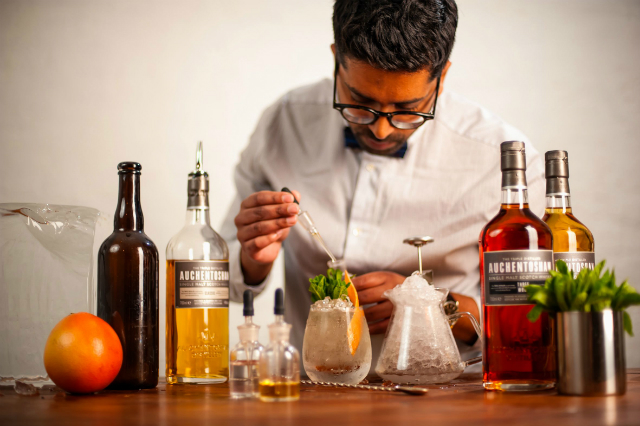
Ryan Chetiyawardana, aka Mr Lyan | Photo courtesy of Mondrian London
GOOD THINGS TO DRINK WITH MR LYAN AND FRIENDS
It was quite a year for Ryan Chetiyawardana, aka Mr Lyan. At the 2015 Tales of the Cocktail Spirited Awards, he was named International Bartender of the Year and his second bar, the botany-focused Dandelyan at Mondrian London, won Best New International Cocktail Bar. His first cocktail book, Good Things to Drink with Mr Lyan and Friends was released on Dandelyan’s first anniversary. Mr Lyan stepped onto the global bar stage with the 2013 opening of White Lyan, a revolutionary bar concept that emphasizes sustainability and uses pre-bottled cocktails and no perishables, fruit or ice. White Lyan was named Best New International Cocktail Bar at the 2014 Spirited Awards.
In his introduction, My Lyan says that Good Things to Drink is “all about those times when we get together with friends and family, and the cocktails that make those times even more memorable.” While his bars are known for serving complex drinks with esoteric ingredients, the book’s 60 recipes are designed to be approachable and are ideal for entertaining, from batch cocktails that can be scaled up to pitchers and punch bowls, to a flask of something rich and hot for a spontaneous stroll on a crisp winter night. Kim Lightbody’s gorgeous photos not only showcase the cocktails, but really make you wish you were a guest at the various gatherings featured throughout the book.
The recipes are organized by occasion and season, such as Morning Buzz (brunch), Pre-Dinner, Fireside Serves, Winter Feasting and Alfresco Days. In the Friday Nights section, Mr Lyan notes that his favorite cocktail is the Manhattan (“peerless when I need something to settle body and soul late in the evening”). In addition to a batch recipe, he features a Manhattan variation, the Brooklyn, with a traditional recipe and the Brewed Brooklyn for Winter Feasting. The bottled recipe adds stout, IPA, raspberries, fennel seeds, wormwood, dandelion root and burdock root – the bitter kick “really comes to life after dark!” Good Things to Drink closes with a section on The Perfect G&T, including the House G&T that’s Mr Lyan’s standard go-to at home – essentials are lots of ice, crisp tonic, and keeping the gin and glassware chilled in the freezer.
GIN: THE MANUAL
Published in October 2015, Gin: The Manual by Dave Broom is similar in size and format to his 2014 book, Whisky: The Manual, which was named Best Spirits Book at this year’s Tales of the Cocktail Spirited Awards. (Broom was named Best Cocktail & Spirits Writer.) The book coincides with a boom in the gin industry – more brands are available than ever before and new ones hit the market seemingly every week.
After opening with chapters on the history and production of gin, Broom gets to the heart of the book: 120 gins from around the world – British, Continental & Rest of the World, American, and Other Gins. In addition to profiles and tasting notes, each gin is categorized according to a “Flavor Camp” system – Juniper, Citric, Spicy, Floral, and Uncategorized. Each gin is tested in four preparations (Gin & Tonic, with Sicilian Lemonade, Negroni, Martini) and scored based on how well they work in each mix, from 1 (“Avoid”) to 5 (“Superb”). There are special scores on opposite ends of the scale, from an “X” at the bottom (“There are some gins where mixing simply doesn’t work.”) to the highest score of 5* (“The perfect synthesis of gin and mixer. Everyone needs to have at least one of these.”). Note that the scores are given for the mix, not the gin itself.
Personal favorites like Sipsmith and Fords Gin did well; the former scored 5 for the Negroni and Martini, while the latter scored a 4.5 G&T and a 5 Martini. Beefeater got top marks: 5 G&T and Negroni, and 5* for Sicilian Lemonade and Martini. Tanqueray likewise did well, scoring a 5 Martini and 5* Martini (“Tanqueray is made for this.”). With these gins and 116 more to explore, Gin: The Manual is sure to be a popular reference book for gin aficionados and newbies alike.
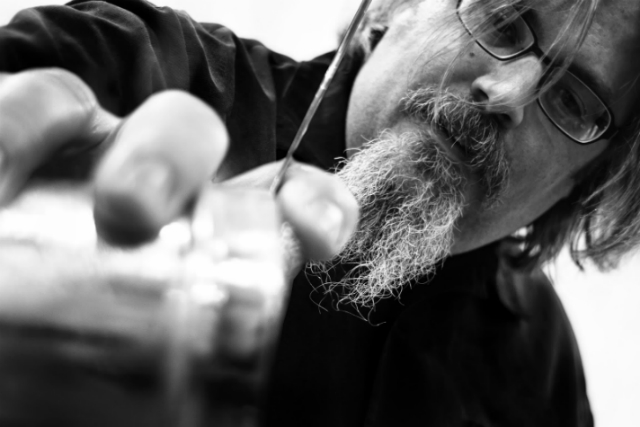
David Wondrich | Photo by Danny Valdez
IMBIBE!
Gary Regan describes David Wondrich’s seminal 2007 work, Imbibe! as “possibly the best cocktail book ever written.” Imbibe! became the first cocktail book to win a James Beard Award and its influence on the modern cocktail renaissance cannot be overstated. Since the book’s publication, craft cocktail bars have expanded from dozens in historic cocktail cities to hundreds across the country and around the world. Bartenders and imbibers alike can thank Wondrich and Imbibe! for spirits like Bols Genever and Smith & Cross. In April 2015, Wondrich published the Updated and Revised Edition of Imbibe! From Absinthe Cocktail to Whiskey Smash, a Salute in Stories and Drinks to “Professor” Jerry Thomas, Pioneer of the American Bar.
In an interview with Robert Simonson ahead of the book’s release, Wondrich says that the need for a second edition arose “about three weeks” after the first edition was published. Featuring 120 recipes, the new edition of Imbibe! adds 43 pages, including new anecdotes about the legendary father of the American bar, Jerry Thomas and details on his now-lost second book. The Mint Julep (“unfairly neglected in the first edition”) is named “the first true American drink” and placed before the American Revolution, making it a much older drink than previously thought. Wondrich also pinpoints the origin of the word “cocktail” – no spoilers, but it involves a clove of ginger and an English horse dealer. As an homage to Thomas, who intended his book to be a “register of the world’s drinks,” Wondrich includes pre-Prohibition recipes for the Singapore Gin Sling, Caribbean Green Swizzle, Peruvian Pisco Sour and the Argentine-Uruguayan San Martin Cocktail.
Fans of the first edition will find plenty of reasons to pick up the new Imbibe! For those exploring it for the first time, do take Dr. Wondrich’s advice: “Make yourself an Old-Fashioned or a Presidente before you start reading. It’s thirsty work and you’ll need it.”
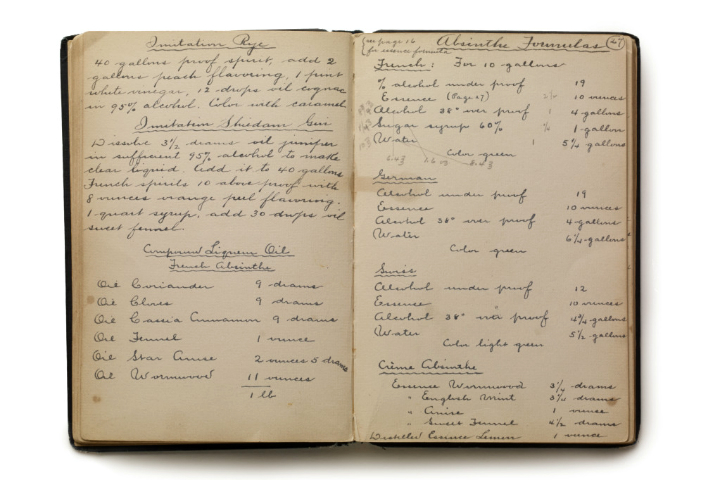
Imitation rye and absinthe formulas from “Lost Recipes of Prohibition” | Photo: John Schulz and Daniel Fishel
LOST RECIPES OF PROHIBITION
Lost Recipes of Prohibition: Notes from a Bootlegger’s Manual is a singular, fascinating book by Matthew Rowley, the author of Moonshine! and a former museum curator who specializes in folk distilling and the manufacture and distribution of illicit spirits. It all started with a little blue book that was given to Rowley by the late Frederic C. “Fritz” Blank, who was the chef-owner of the now-closed Deux Cheminées in Philadelphia. In the restaurant’s basement kitchen, Rowley looked over the “old but not ancient” book, which was different than any of the tens of thousands of cookbooks, bartender’s guides and manuals he’d handled over the years. The spine read The Works Of George Sylvester Vierek: The Candle And The Flame. Inside, there were no printed pages; instead, there were hundreds of handwritten notes with recipes for gin, absinthe, cordials and whiskeys, written in English, German and in later entries, Latin. One can only imagine Rowley’s excitement as he realized that the notebook was “a compounder’s formulary, a collection of recipes for making alcoholic beverages, disguised as a rather dreary book of poetry from 1912.” Through his research, Rowley discovered that the notes were written by Victor Alfred Lyon, a physician who lived in Harlem.
More than 70 pages from Lyon’s notebook are featured in Lost Recipes of Prohibition. Rowley has rearranged the entries and grouped them into broad categories. Each section about spirits or cordials has descriptions of relevant ingredients or techniques. More than 100 recipes are included; some are transcribed directly from Lyon’s notebook, others are scaled down or adapted for modern ingredients. Lost Recipes of Prohibition also features recipes from some of today’s leading bartenders, who use Lyon’s ingredients in contemporary cocktails and cordials. For context, Rowley looks at Prohibition in America, to “see where formularies such as this fit into the world of drinks,” and also reviews some of the tools for making some of Lyon’s recipes.
The magic of this book is captured in an interview that aired recently on All Things Considered, when host Ari Shapiro asks Rowley if there were any surprises in Lyon’s notebook. Rowley talks about ice kümmel, a caraway-flavored cordial that “calls for putting a hot, supersaturated sugar solution in a nice, beautiful clear bottle, just letting it cool undisturbed, and over a few days, very delicate little sugar crystals start to form on the inside of the bottle. The whole thing looks rimed with frost. You decant that, and then you fill it with your kummul. Or, you could do rye whiskey or, you know, creme de menthe or whatever else you like, but it’s a really beautiful presentation that has almost entirely died away. We just don’t do this anymore.”
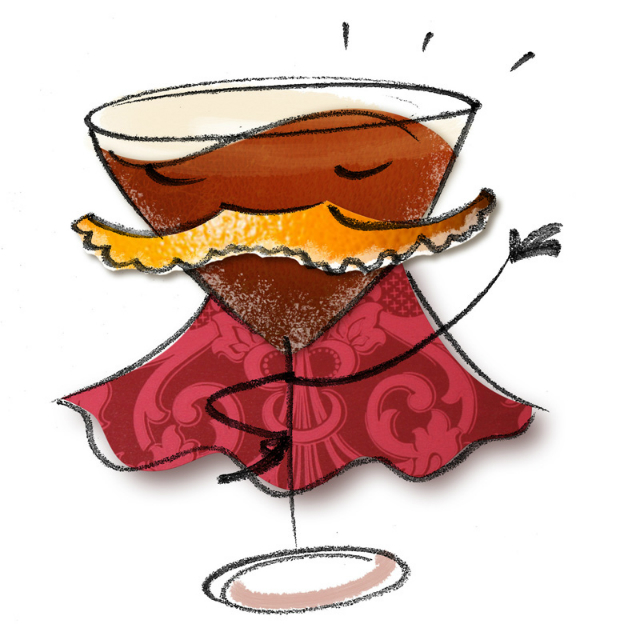
Negroni by Dave Stolte
THE NEGRONI
In May 2015, legendary barman and acclaimed author Gary Regan published The Negroni: Drinking to La Dolce Vita, with Recipes & Lore, an update of his 2013 book, The Negroni: A gaz regan Notion. Regan tells the history and shares 60 recipes for one of the world’s most iconic cocktails, beginning with the Negroni’s forebears, the Americano, the Torino-Milano and the Milano-Torino. With research from David Wondrich to back him up, Regan credits Count Camillo Negroni with inventing his namesake cocktail circa 1919. The legendary “bronco buster” took the club soda out of the Americano, added gin and the rest is cocktail history.
The Negroni is one of the simplest and most elegant of cocktail recipes: 1:1:1 gin, Campari and sweet vermouth, stirred and served over ice. This classic formula is only a template – Regan encourages the reader to play with the ratios, noting that “one of the cardinal rules when it comes to cocktail recipes: Nothing is Written in Stone.” The Campari, however, is sacrosanct; “Campari is a given in the Negroni. It’s the defining ingredient.” In subsequent pages, Regan shares endlessly creative variations on the original with sections on New Negronis, Large Format Negronis (bottle-aged, barrel-aged, et al) and Edible Negronis. Mmm… Negroni Ice Cream…
Regan’s fellow bar legend, Salvatore Calabrese published an updated version of his Classic Cocktails in April 2015. For this expanded edition, “The Maestro” added new chapters and new images, updated info and newly discovered historical anecdotes like the true origin of the Bloody Mary. Fifty new recipes include the turn-of-the-century Absinthe Suissesse from New Orleans, a barrel-aged Blood and Sand, and The Angel’s Tit from the Prohibition era.
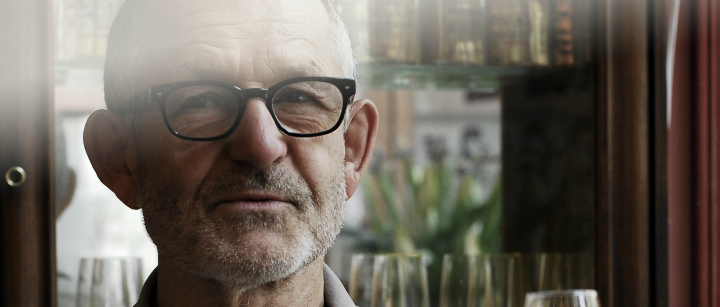
Tomas Estes | Photo courtesy of Tequila Ocho
THE TEQUILA AMBASSADOR
If you Google “tequila,” don’t be surprised if an image of Tomas Estes pops up ahead of a bottle or an agave plant. The founder of Tequila Ocho, Estes is an internationally renowned expert and passionate advocate for tequila and Mexico. A native of East Los Angeles, Estes has opened Mexican restaurants and bars in London, Paris, Cologne, Milan and Sydney, with tequila always at the heart of each city’s bar. Estes has spoken at bar shows in Amsterdam, Paris, London, Rotterdam, Moscow, Athens and Sydney, and held classes in Ukraine, Greece and Mexico itself. In 2002, he was awarded the title of Ambassador of Tequila by CNIT (the Mexican National Chamber for the Tequila Industry).
In 2012, Estes published The Tequila Ambassador, a book that he describes as “a scrapbook, a bulletin board, a collage of some of my experiences gathered from four decades worth of notebooks I’ve kept.” The essays cover a wide range of subjects, including the history and production of tequila, his “Margarita odyssey,” and La Capilla, the small bar in Tequila that is Mecca for worldwide tequila travellers. There’s also a wonderful account of a road trip with Ron Cooper, the founder of Del Maguey Mezcal. Interspersed with these essays are conversations with some of the world’s leading tequila producers and influencers, including the late Don Julio González (Don Julio Tequila), David Suro (owner of Tequilas restaurant, founder of Tequila Interchange Project and Siembra Azul Tequila), and the legendary Don Javier, owner of La Capilla and the creator of the Batanga and Paloma cocktails. The book includes nearly 100 tequila cocktail recipes. The Tequila Ambassador quickly sold out and was only being offered at auction sites like eBay for extravagant prices.
This fall, Difford’s Guide announced that The Tequila Ambassador would be reprinted in a limited run of 1,500 copies. According to Difford’s, this is a one-off, never to be repeated reprint. As this post goes live, there are still copies available. If you missed The Tequila Ambassador the first time, do not miss it again! To order The Tequila Ambassador, visit the Difford’s Guide website.
THE TIPPLING BROS. A LIME AND A SHAKER
With a collective 55 years of experience in the beverage industry, Tad Carducci and Paul Tanguay, aka The Tippling Bros., published The Tippling Bros. A Lime and a Shaker: Discovering Mexican-Inspired Cocktails in April 2015. The book’s 72 recipes are centered on four themes near and dear to the duo: Tradition, Craft, Spice and Celebration.
Tradition is highlighted by several Margaritas, including The Tippling Bros.’ quintessential version (blanco tequila, fresh lime, “Grandma Mix” of 1:1 simple and Grand Marnier, agave nectar) along with delicious variations like the Watermelon Hibiscus Margarita, Blood-Orange Cinnamon Margarita, Savory Strawberry Margarita, Julio Bermejo’s famed Tommy’s Margarita, and the Margarita Con Humo, which adds smoky mezcal to the mix. A fun section on Micheladas features The Tippling Bros.’ basic version, along with the Clamato, the green Kermich, Tikimich, and the Charro Mojado, aka the Wet Cowboy.
The book also features a section on Tequila 101 – its history, distilling process, different styles and brands – and includes bonus recipes for aguas frescas, syrups and salts. Sprinkled throughout the book are recipes for festive dishes like Tad’s Kitchen Sink Turkey Chili and Paul’s Poutine Beef Brisket for Tacos. The Tippling Bros.’ breezy writing style and Lauren Volo’s photos combine to make A Lime and a Shaker as vibrant as the agave spirits and Mexican culture that it celebrates.
TO HAVE AND HAVE ANOTHER
In the introduction to his 2012 book, To Have and Have Another: A Hemingway Cocktail Companion, author Philip Greene quotes Ernest Hemingway, who said, “Don’t bother with churches, government buildings or city squares; if you want to know about a culture, spend a night in its bars.” Hemingway’s legendary thirst enlivened characters throughout his literary oeuvre, from Jake Barnes drinking a Jack Rose in The Sun Also Rises to Robert Jordan and the ritual of dripped absinthe in For Whom the Bell Tolls. Greene’s book features recipes for more than 50 cocktails, from the earliest drink Hemingway ever wrote about (Cognac & Bénédictine, from an unpublished story) to the Scotch With Lemon & Wild Strawberries, mentioned in a posthumously published short story, “The Strange Country.” Along with each recipe, Greene offers suggested reading, such as The Sun Also Rises (Chapter 11) and A Moveable Feast (“A Good Café on the Place St.-Michel”) for the Hot Rum Punch.
Three years later, Greene has published a revised and expanded edition of To Have and Have Another. For this new edition, Greene has added more than 35 new recipes. In “Papa’s Legacy,” Greene notes how many of the world’s top bartenders have created drinks inspired by Hemingway or their own takes on Hemingway classics. Highlights include the Hemingway Daiquiri a la Voisey by Charlotte Voisey; Blue-Green Isaac’s Special, a riff on the Green Isaac’s Special by Jeff “Beachbum” Berry; Colada Cubana, a take on the Piña Colada by Jared Brown and Anistatia Miller; and the Faro Point, Jillian Vose’s homage to one of Hemingway’s favorite bartenders, Constante Ribalaigua at the Floridita.
For a comprehensive list of (almost) all the cocktail and spirits books released in 2015, visit Alcademics.
